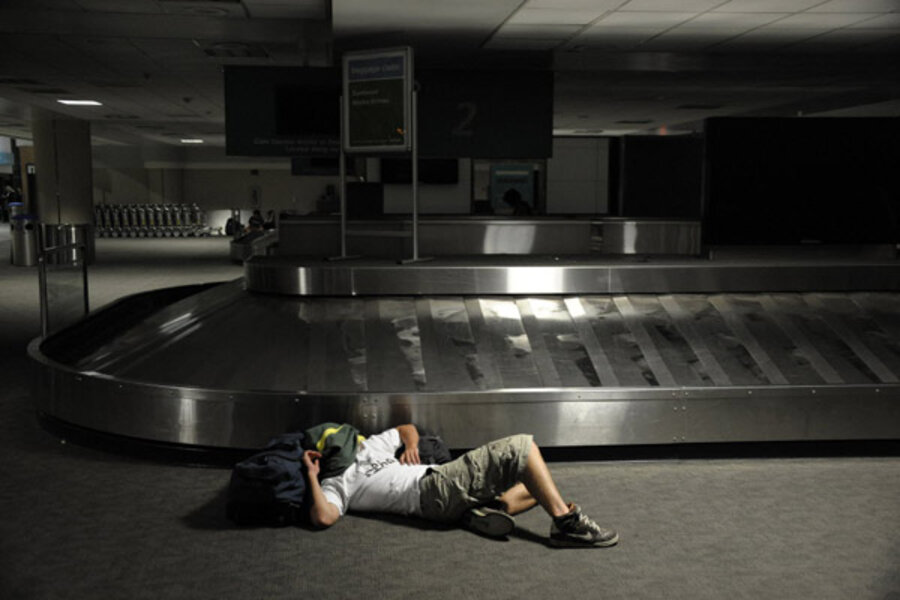Could the massive West Coast blackout have been prevented?
Loading...
| Los Angeles
The precise reason for the 12-hour, full system blackout affecting 5 million people across a large swath of Southern California and Mexico Thursday is still being investigated. By 2:15 a.m. Pacific time Friday, all but 200 megawatts of the initial 4,300 lost megawatts had been restored according the North American Regulatory Commission (NERC).
Initial reports blame a utility worker doing maintenance near Yuma, Ariz., for triggering the massive blackout that affected residents across San Diego County, southern Orange County, western Arizona, northern Baja California and parts of Mexico.
“NERC and [the Federal Energy Regulatory Commission] are partnering to conduct a full inquiry into the cause of this event,” said Gerry Cauley, president and chief executive officer of NERC, in a statement.
Until investigations are complete, energy and utilities experts are raising serious questions about safety and oversight procedures, backup plans, and the overall health of the electrical grid in the region.
“It makes one wonder that if this could happen unintentionally by a single person doing routine maintenance, what might terrorists do intentionally,” says Sterling Burnett, senior fellow with the National Center for Policy Analysis, a nonprofit research institute in Dallas. “This shows the need for revamping and improving our entire electrical grid system, most of which is 20 to 30 years old. Most people have already acknowledged this but I don’t think they realized how soon it was needed and how fragile the existing system is.”
Several analysts say more “redundancy” needs to be built into the system, specifically the incorporation of backup procedures that kick in when something goes wrong, like a second pair of brakes in a subway train. The redundancies take the onus off of inspectors – helping to avoid human error.
“Sometimes the best way to prepare for every possible contingency from natural disaster to human error is simply to build in redundancy,” says Nabil Nasr, a member of the National Research Council Board on Manufacturing and Engineering Design. “So many things can go wrong that it becomes hard and expensive to prepare and design for them all.”
The ultimate problem can be related to economics. “It costs a lot of money to keep these grids renewed and up to date, but we saw the cost to the entire Northeast when a single tree went down in Ohio and shut power across Pennsylvania and New York" in 2006, says Mr. Burnett. “President Obama mentioned the nation’s aging infrastructure in his jobs speech Thursday, but that was mostly about roads and bridges and schools. Few things are more critical than the delivery of electric power.”
That comment is backed up by newspaper reports and local TV news broadcasts filled with stories of restaurants which had to cope without refrigeration, traffic jams caused by lost traffic lighting, and elderly residents trapped in their homes without air conditioning in the sweltering Southwest heat.
But even hardship can be a wakeup call to do things differently and to be better prepared, say a host of companies which are introducing new technologies to deal with such occasions.
“It used to be very expensive to duplicate all of your computers and have a way to deal with the data businesses need to stay up and running,” says Andrew Lochart, vice president of marketing for nScaled, a company that provides backup and disaster recovery for businesses. Several east coast companies used Mr. Lochart's services during hurricane Irene.
Russ Leslie, associate director of the Lighting Research Center at Rensselaer Polytechnic Institute, says the incident presents an opportunity to discuss the many issues surrounding utility needs and operation from the consumer side. His center has done extensive work on systems and controls that reduce electric load demand during crises.
By automatically shutting off power to less-critical uses like lighting during a crises, you can save much-needed energy for essential services, says Mr. Leslie. In a heavily populated state like California, where nobody wants any more power plants or power lines in their backyard, “this is critical," he says. "This event has been an opportunity to make this all clear.”





